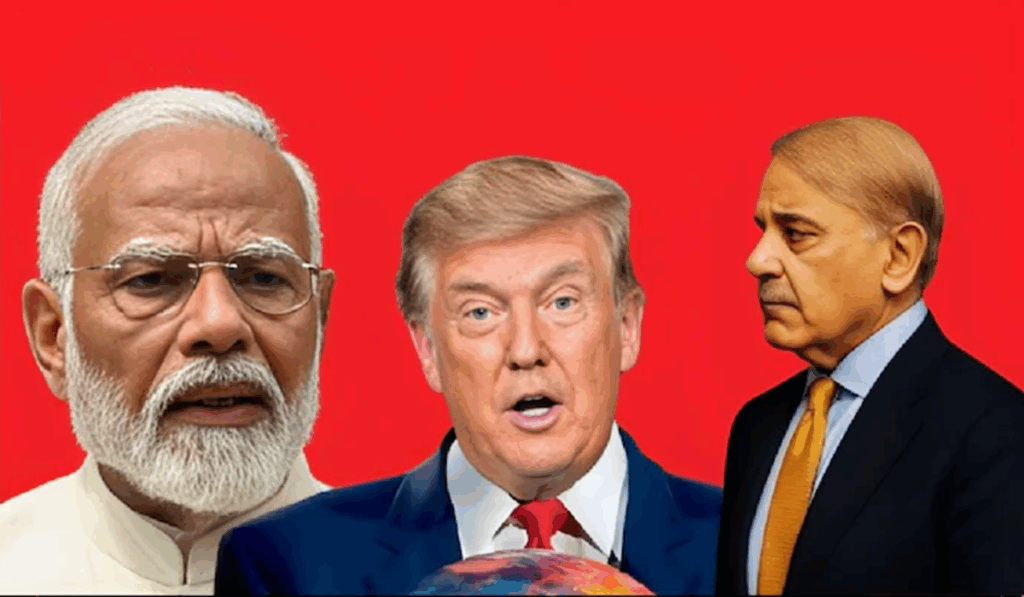India and Pakistan clashed in their most intense conflict in decades, with four days of missiles, drones, and airstrikes. The fighting, which began abruptly, ended just as suddenly with a ceasefire brokered through urgent diplomacy.
By Our Political Bureau
New Delhi: India and Pakistan, nuclear-armed neighbors and long-standing rivals, engaged in a fierce four-day conflict marked by missiles, drones, and airstrikes, the most severe in decades. The conflict, sparked by India’s “Operation Sindoor” on May 7 targeting alleged terrorist infrastructure in Pakistan and Pakistan-administered Kashmir, escalated rapidly. Pakistan responded with “Operation Bunyan-un-Marsus,” striking Indian military bases. On Saturday, following intense diplomatic efforts led by the United States, Saudi Arabia, and China, both nations agreed to a “full and immediate ceasefire.” However, within hours, mutual accusations of violations emerged, underscoring the fragility of the truce.
Origins and Escalation of the Conflict
The conflict traces back to a terrorist attack on April 22 in Pahalgam, Indian-administered Kashmir, which killed 26 people. India blamed Pakistan-backed militant groups and launched “Operation Sindoor” on May 7, targeting nine sites in Pakistan with airstrikes. India claimed it hit only terrorist camps, sparing civilian or military targets. Pakistan retaliated with cross-border shelling and drone attacks, escalating the situation. By Friday and Saturday morning, both sides deployed missiles and drones, with India striking six Pakistani airbases and Pakistan targeting 26 locations across Jammu-Kashmir, Punjab, Rajasthan, and Gujarat. Over 70 people, mostly in Kashmir, lost their lives in the violence, amplifying global concerns.
The Rise of Kamikaze Drones
For the first time, both India and Pakistan employed large-scale attack drones, including single-use “kamikaze” drones, a technology popularized in the Russia-Ukraine war. Both nations have developed domestic drone capabilities and imported advanced systems from allies. Experts note these drones were used to detect enemy weapon systems and test response times. India claimed to have intercepted over 400 Pakistani drones targeting Srinagar, Punjab, and other northern cities. Pakistan reported Indian drone incursions as well. This new weaponry complicated the conflict, raising fears of uncontrolled escalation and prompting urgent international intervention.
Diplomatic Push and U.S. Mediation
As the conflict spiraled, the United States, Saudi Arabia, and China stepped in to mediate. U.S. President Donald Trump announced the ceasefire on Saturday via Truth Social, stating, “After a long night of talks mediated by the United States, India and Pakistan have agreed to a FULL AND IMMEDIATE CEASEFIRE.” U.S. Secretary of State Marco Rubio and Vice President J.D. Vance engaged directly with Indian Prime Minister Narendra Modi and Pakistani Prime Minister Shehbaz Sharif. Rubio emphasized that both nations would begin talks on broader issues at a neutral venue. While Pakistan praised the U.S. role, India downplayed it, insisting the agreement was reached through direct bilateral communication.
Ceasefire Mechanics and Initial Hiccups
India’s Director General of Military Operations, Lt. Gen. Rajiv Ghai, revealed that the ceasefire was formalized during a 3:35 p.m. local time call on Saturday, initiated by a hotline message from a senior Pakistani military official to his Indian counterpart. Ghai noted a follow-up call was planned for May 12 to discuss modalities for sustaining the truce. Pakistan did not confirm the call but said it received “assurances” from the U.S. that India would comply. Hours after the announcement, explosions were reported in Srinagar and Jammu, prompting India to accuse Pakistan of violating the ceasefire. Pakistan denied the allegations, reaffirming its commitment to the truce.
Regional and Global Implications
The ceasefire brought temporary relief, but its durability remains uncertain. India, positioning itself as a regional superpower, has historically resisted third-party mediation, while Pakistan, reliant on foreign aid, welcomes it. Analysts suggest the truce allows both sides to claim victory domestically—India asserting it taught Pakistan a lesson, and Pakistan claiming it held its ground despite its smaller size. Kashmir, a flashpoint since the 1947 partition, remains central to the dispute. Both nations reiterated their claims over the region, signaling potential future tensions unless underlying issues like terrorism and territorial disputes are addressed.
Balochistan’s Role and Regional Complexities
Amid the India-Pakistan conflict, the Baloch Liberation Army (BLA) launched 71 coordinated attacks in Balochistan, which it calls “occupied Balochistan.” The BLA warned India and the global community against Pakistan’s “deceptive peace rhetoric” and sought support for an independent Balochistan. Balochistan, Pakistan’s largest province and home to the strategic Gwadar port and China-Pakistan Economic Corridor (CPEC), is a geopolitical hotspot. The BLA’s actions strained Islamabad, which faced both external conflict with India and internal insurgency, complicating the regional security landscape.
Future Prospects and Lingering Uncertainties
The ceasefire sparked celebrations in Ghaziabad, India, and relief in Islamabad. Yet, nighttime explosions in Kashmir highlighted the truce’s fragility. India’s Foreign Secretary Vikram Misri accused Pakistan of “repeated violations” and said the military was instructed to respond firmly to any breaches. Pakistan’s Prime Minister Shehbaz Sharif called the ceasefire a “victory of our honor and principles,” thanking Saudi Arabia, China, and others for their mediation. Analysts warn that without serious dialogue on Kashmir and terrorism, such ceasefires will remain temporary. The involvement of global powers underscores the conflict’s broader implications for South Asian stability.
This fragile ceasefire marks a step toward de-escalating India-Pakistan tensions. However, with Kashmir and Balochistan fueling unrest, the path to lasting peace in South Asia remains fraught with challenges.


